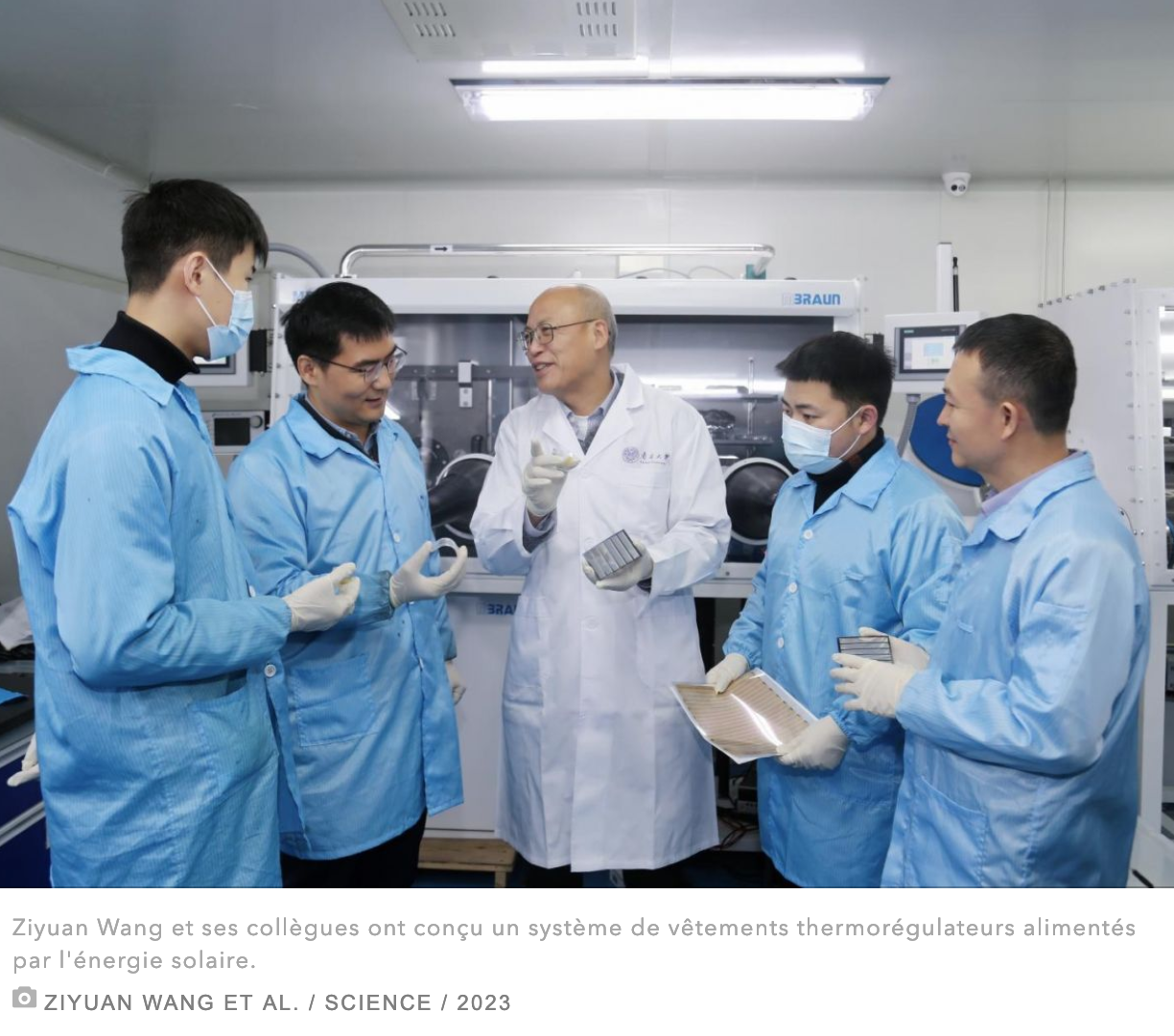
A lightweight undershirt that becomes as warm as a down jacket as soon as it gets cold is possible thanks to the invention of researchers at Nankai University in Tianjin, China. They have developed a thermoregulating garment, self-powered by solar energy and capable of reacting quickly to temperature fluctuations, by combining a flexible solar cell with an electrocaloric device.
This new device could guarantee the safety and comfort of the human body in the event of fluctuating ambient temperatures. Better still, it could even increase man’s ability to survive in extreme environments, such as the polar regions and outer space, according to recent research published in the journal Science.
In this study, Ziyuan Wang and his colleagues present a system of thermoregulating garments powered by solar energy that are capable of reacting rapidly to various complex or rapid temperature changes in the environment.
Regulating human body temperature
Clothing is the most common way for humans to regulate their body temperature on a daily basis in relation to their environment. But the ability of clothing to adapt to rapid changes in temperature, particularly in harsh environments – such as the polar regions, deserts or space – where temperatures can fluctuate rapidly between very hot and very cold remains a challenge for current approaches to temperature-regulating clothing.
Until now, thermoregulatory garments have fallen into two categories. On the one hand, the passive type, which includes radiative cooling, phase change and adsorption systems (the phenomenon of fixing a substance to a surface, not to be confused with absorption). Although these garments have the advantage of not requiring external energy, many of them only provide one-way thermoregulation, either heating or cooling.
On the other hand, there is the active type, which provides rapid cooling or heating, thanks to semi-conductor active thermoregulation systems. However, these garments are often energy-hungry and require large, complex mechanical equipment.
But according to researcher Ziyuan Wang and his colleagues, their flexible OPV-EC thermoregulating garments (dubbed “OETC”) can both cool the skin by 10.1 Kelvin (K) in hot weather and maintain the body at a temperature 3.2 Kelvin higher than that of bare skin in the dark or at night.
A solar-powered device
To achieve this, their system combines an organic photovoltaic (OPV) module – to acquire energy directly from sunlight – with a bidirectional electrocaloric (EC) unit – to heat or cool under the action of an electric current – in a single flexible device, which can be integrated into conventional clothing. The device is therefore self-powered by sunlight and requires no additional energy source.
As a result, this integrated OETC device maintains the temperature of human skin within a thermal comfort zone of between 32.0°C and 36.0°C, even when the ambient temperature varies between 12.5°C and 37.6°C. The device’s low energy consumption and high efficiency mean that it can be used to provide controllable, dual-mode thermoregulation for 24 hours, with 12 hours of solar energy.
“This device opens up numerous possibilities for developing controlled, self-powered and portable localised thermal management systems and for extending human adaptation to harsh environments,” conclude the authors in their study.
Read more – Sciences & Avenir
